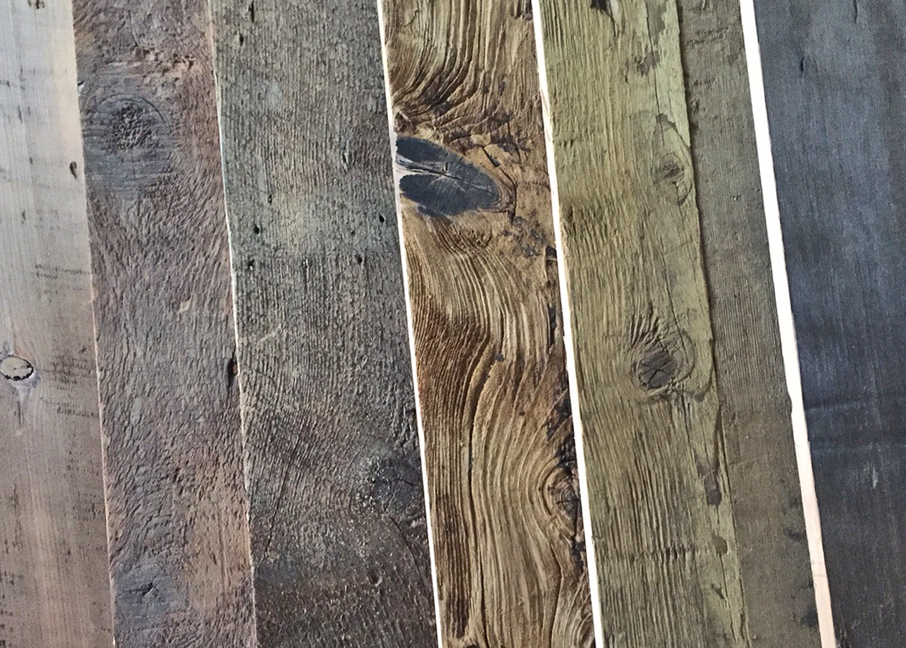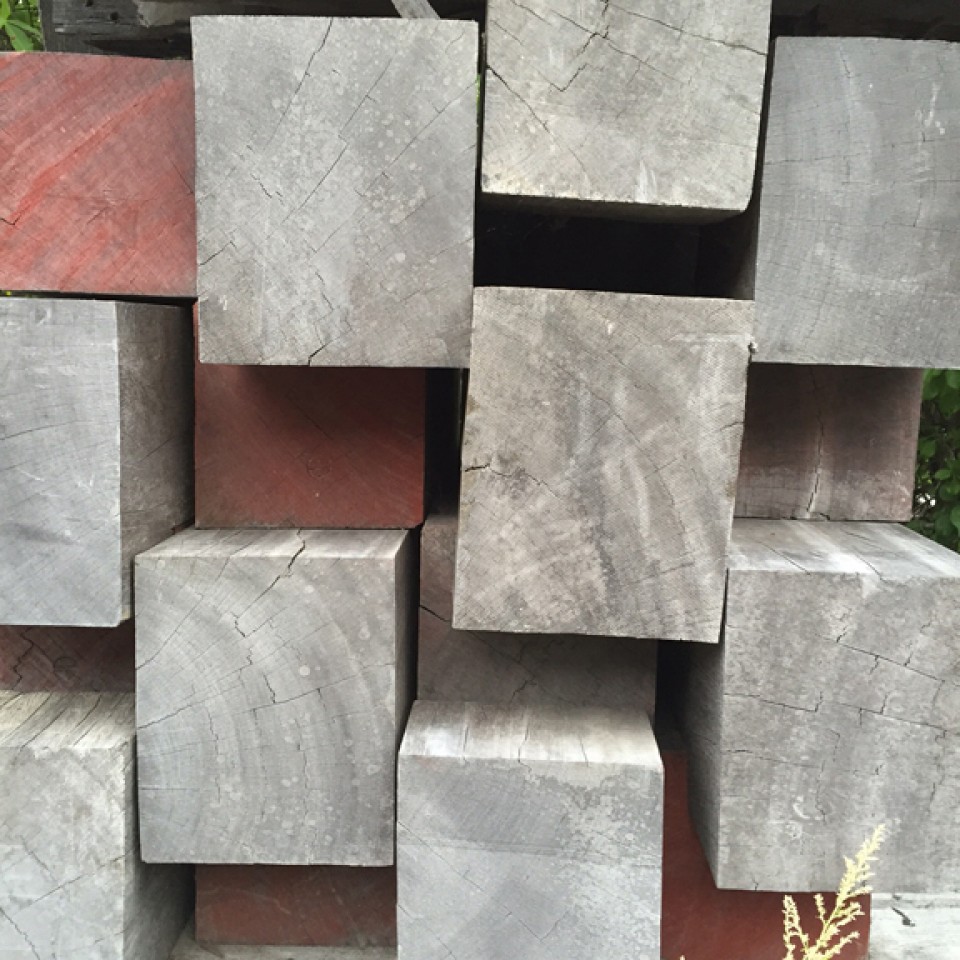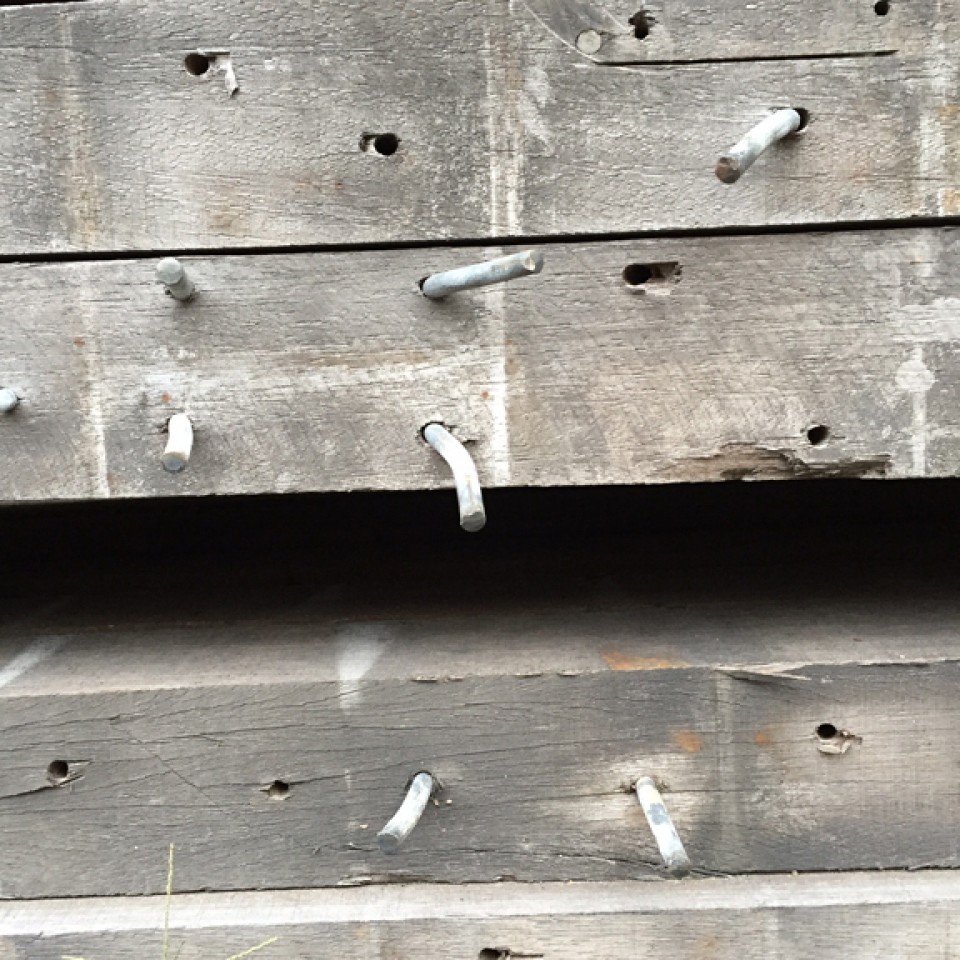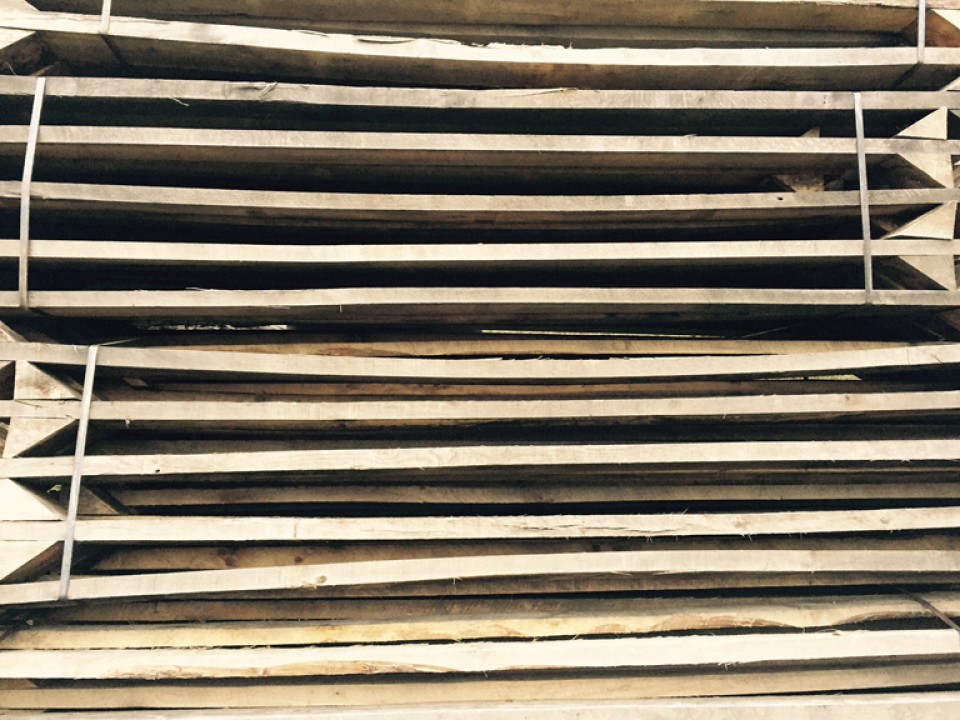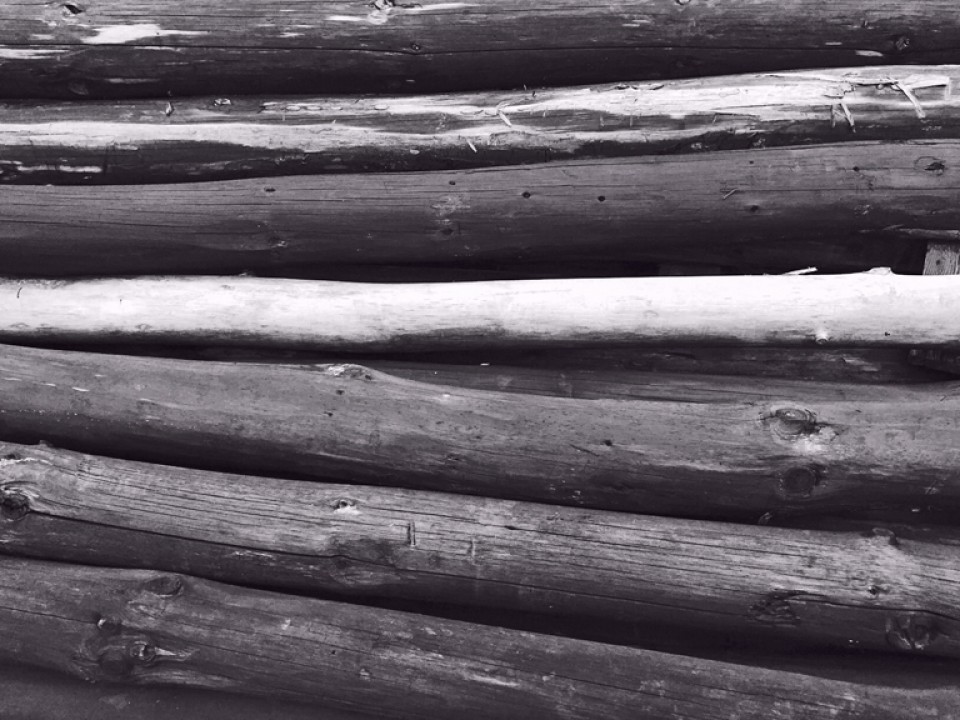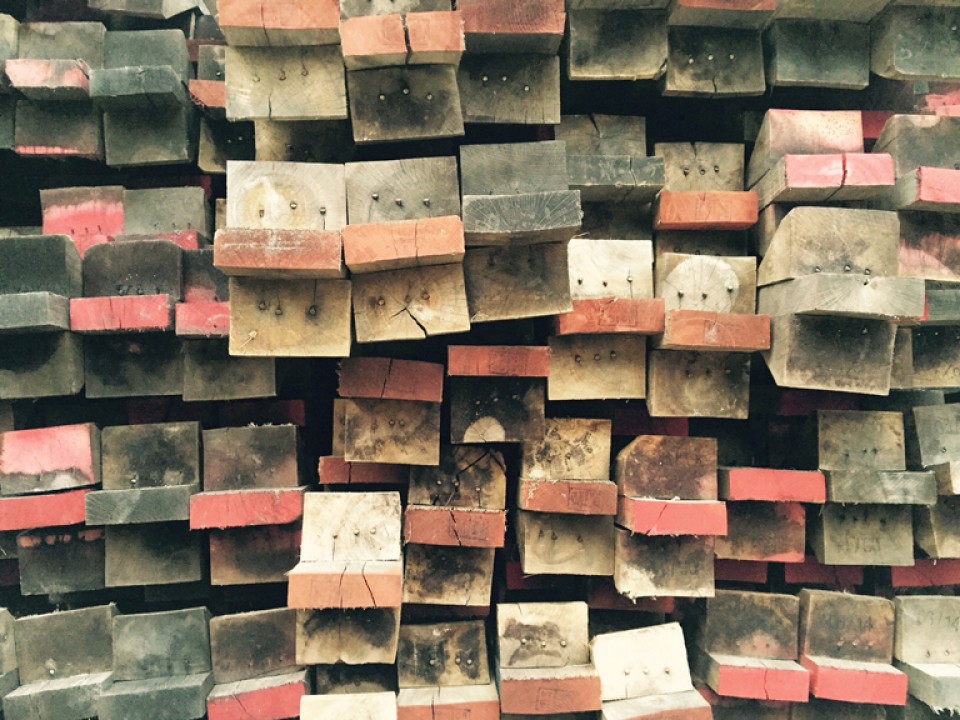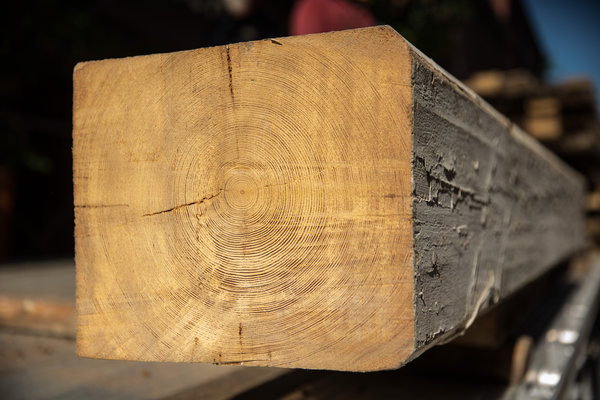Reclaimed wood ages brown – at least when it’s not daily exposed to light. Outside of time, other factors result in a wide range of brown – wood species, age of boards, original saw blade orientation, use and it’s exposure to a mix of man made influences – from tobacco smoke, pickle juice and other food grade fluids. All of the browns in their ‘found’ condition evoke a warm natural quality, but with individual personality. The woods below are a collection of antique grade Spruce/Fir, Hemlock, White Pine and potentially other species – sourced from barns, residential buildings, mushroom drying boards and Worcestershire Sauce tanks. The design possibilities within the family of natural browns are limitless.
reclaimed wood
Re-arrangements
Salvaging a long lasting wood, and New York City’s Past
The New York Times profile by Vivian Yee on woods recovered from historical structures in the city. Here, old lumber at 443 Greenwich St. in lower Manhattan. Story link. photo: Sam Appleton, NY Times
Reclaimed Joists
Reclaimed wood joists, reused as joists, is surprisingly uncommon. Naily old lumber, dusty and often surface checked, can easily fail the grade on first glance. But these 3 x 10’s are sound enough – at least for sistering a row house renovation. They occupy the rare middle ground between being dumped at the landfill (or chipped) or re-milled into high end flooring or furniture.
In this video, Jim Hartin of Blueline Construction, provides an overview of the reclaimed joist stock that is lined up for reuse at the passive house project, 158 Clifton Pl. in Brooklyn.
The collection includes a range of species – antique Red Spruce, Longleaf Pine, Eastern Hemlock and Douglas Fir – sourced from a variety of 19th to late-20th c. NYC buildings. The most recent is an 1883 Tribeca warehouse at 443 Greenwich St., once home to the Novelty Toy Co. (they introduced the first teddy bear), the American Steel Wool Co. and a book bindery. The penthouse at the new development, once framed with the antique lumber, hit the market at $51m.
Get the Nails Out!
At some moment in the late 1800’s, a construction worker hammered an iron nail into a flooring board, joining it to a structural joist below. For over a century, it stayed lodged there, alongside millions of other nails that held a city together.
When an old building is taken down in the 21st century, not a whole lot makes it past the landfill, save the scrap metal and antique lumber (if we’re lucky). Salvaged wood can house generations of embedded nails, and every tiny scrap of it needs to be extracted – or it’s a potential hazard for the sawmill. In the modern re-manufacturing process, de-nailing is like the slow going work of freeing up a log jam. Utilizing hand chisels, hammers, pry bars and metal detectors, the crew develops powerful arms and stamina for the task. Day in and day out, they extract the buried nails from the tight bite of old lumber.
The mark of a nails former presence, other than the tell tale hole, is the “nail bleed”, an ebonized ring of oxidized iron around it’s border. These character marks speak to qualities that do not meet the eye, and can also be a lost buildings smallest and most striking sign of material culture, and a portal to it’s history.
Finishing School
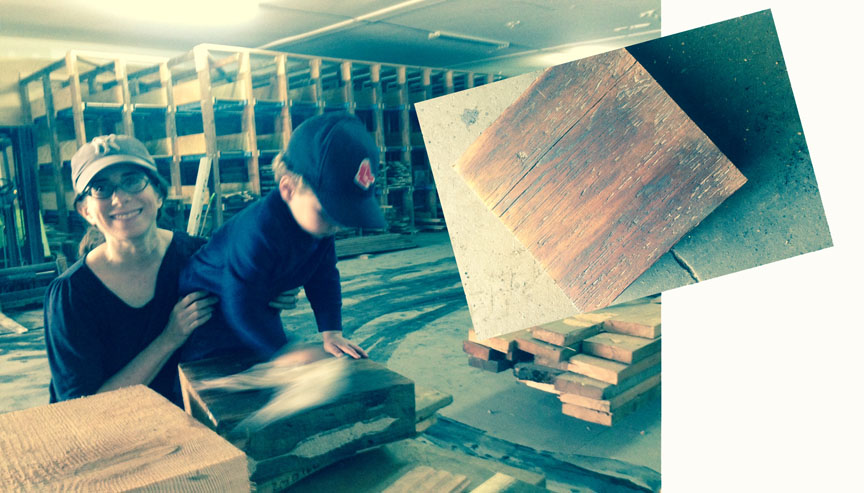 It can take some playing around with sample blocks to get just the right balance of rustic and refined qualities in reclaimed wood. Here, a local toddler (with some parental assistance), applies a hand rubbed beeswax finish to a block of antique wood. The finish is applied after soap and water, followed by a light power sanding – bringing underlying wood figure into relief without removing weathering and texture.
It can take some playing around with sample blocks to get just the right balance of rustic and refined qualities in reclaimed wood. Here, a local toddler (with some parental assistance), applies a hand rubbed beeswax finish to a block of antique wood. The finish is applied after soap and water, followed by a light power sanding – bringing underlying wood figure into relief without removing weathering and texture.
